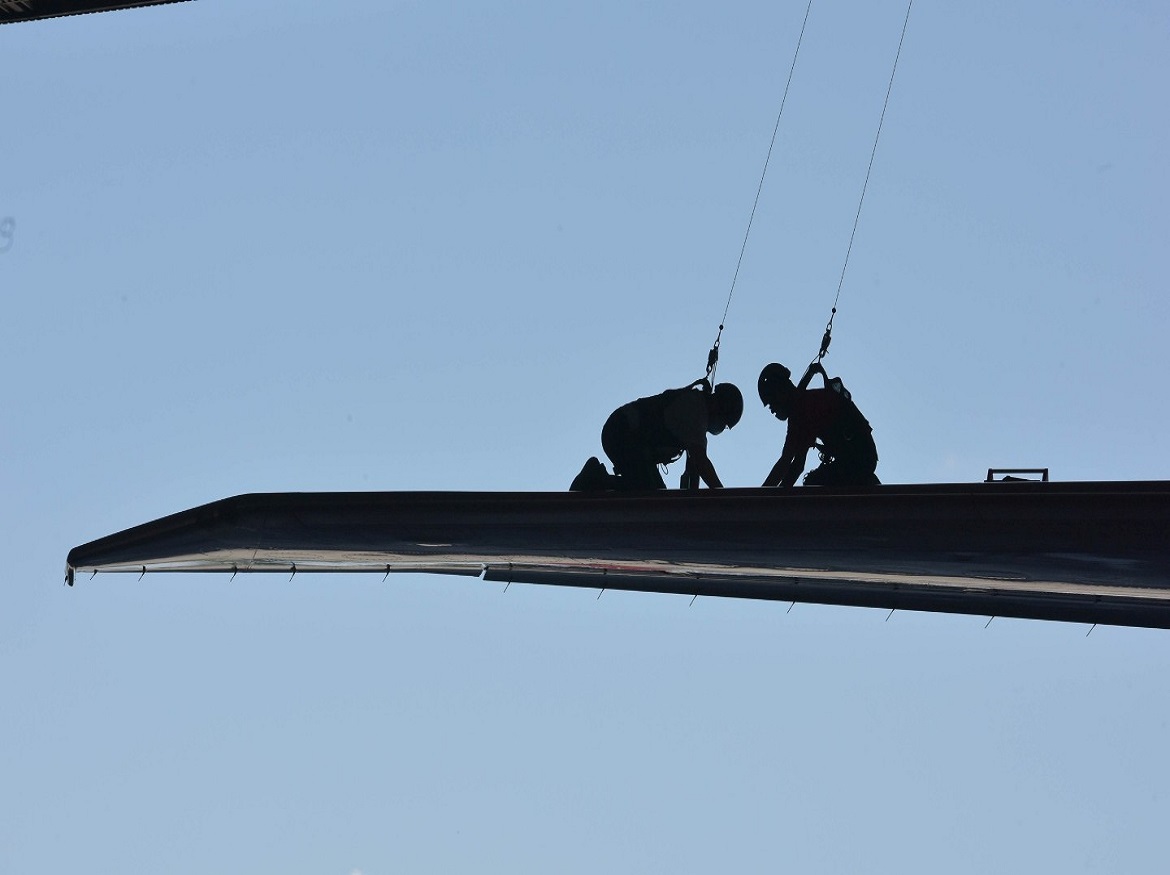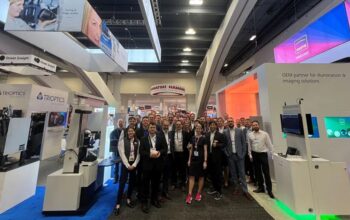One of the top priorities for the aviation sector is to increase the fuel efficiency of airplanes. To do this, Lufthansa Technik employs AeroSHARK, a shark-inspired technology that drastically lowers frictional drag and consequently emissions. However, it is vital to run flow simulations that account for the real form of the wing during a flight in order to apply the coating optimally. As successful measurements flights by Lufthansa Technik have demonstrated, measuring this is a difficult task and a specialty of the Fraunhofer Institute of Optronics, System Technologies, and Image Exploitation IOSB.
The improvement of aircraft aerodynamics is one of the duties of aeronautical engineers. They carry out flow analyses using 3D models of the aircraft to achieve this. In the hangar, a traditional 3D model of the grounded aircraft can be produced using tried-and-true metrological techniques. Since a portion of the tank load is located in the wings and is expended throughout a flight, this is insufficient to comprehend how the wings react when in flight.
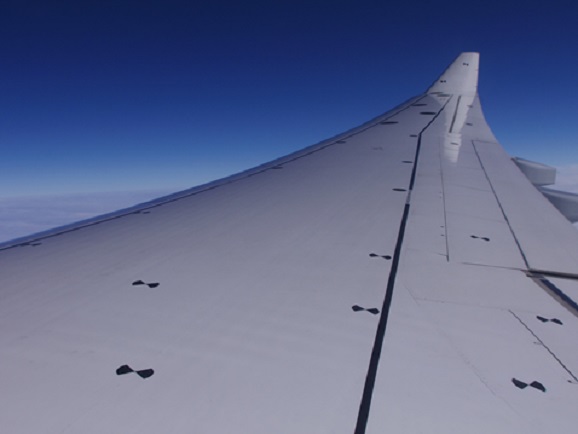
The wings lift several meters in flight
The curvature is influenced by both the change in tank load and the aerodynamic uplift: Depending on the flight segment, the wings raise several meters. Computer-aided flow simulations (also known as computational fluid dynamics, or CFD) of the Sharkskin technology can be used to ascertain the best position and orientation using models that replicate the actual aircraft shape while in flight.
As the director of Fraunhofer IOSB’s Scene Analysis (SZA) division, Dr. Karsten Schulz explains, “Typically, at least two cameras are required to construct such a 3D model. However, the prerequisites for stereophotogrammetry are frequently not realized, for instance, because it is not feasible to accurately position numerous cameras with a view onto a wing in the passenger cabin. With just one camera, our innovative measurement technique offers precise measurement. This is a novel approach to modeling challenging use scenarios.
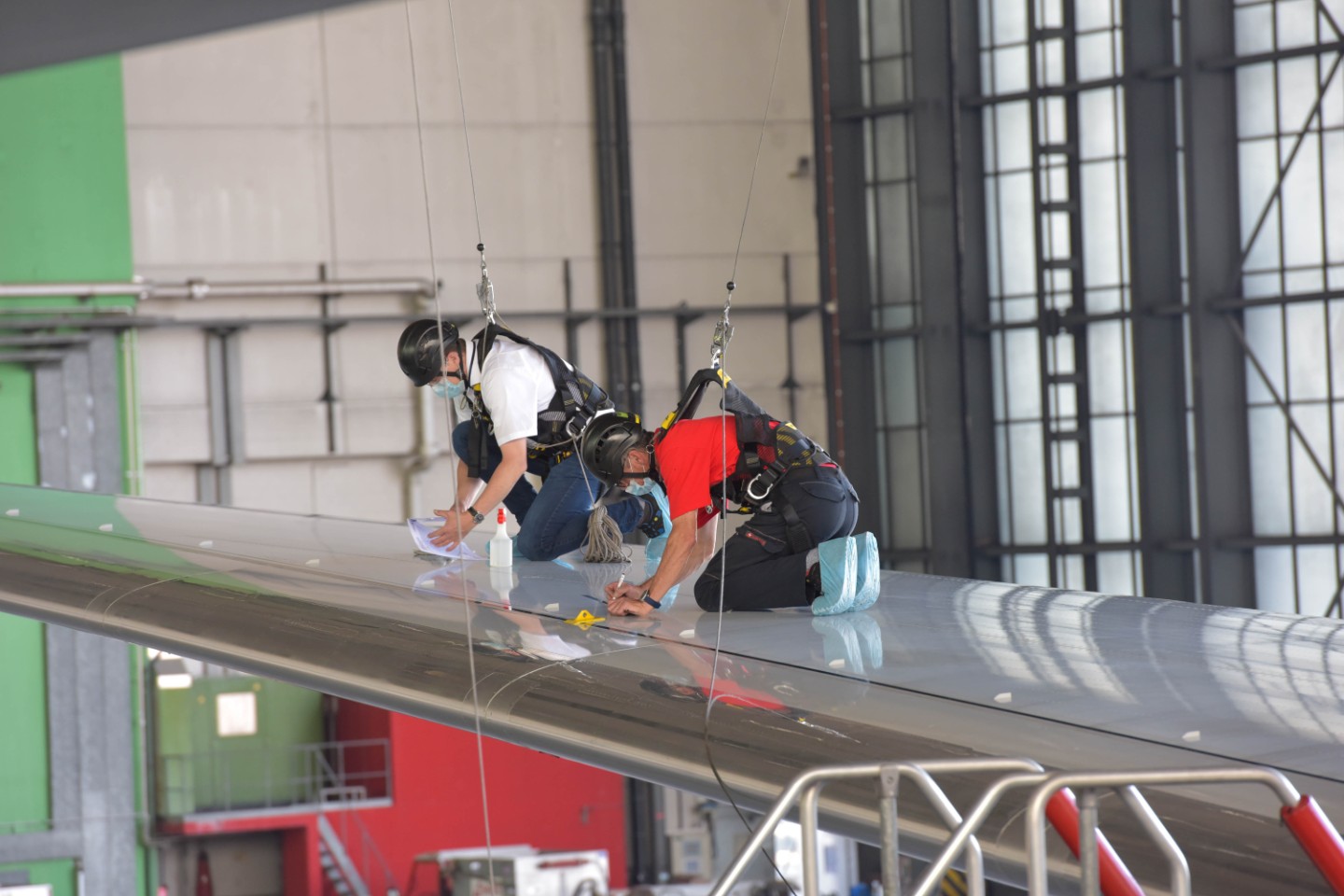
There is only room for one camera in the cabin
The fact that in-flight measurements must take conducted during routine flight operations in order to conserve money and resources presents a unique problem. The measurement apparatus must be set up within the cabin, and measurements must be made via window panes, the outcome of which is occasionally unpredictable. Existing methods call for the usage of multi-camera systems because distances cannot be measured with just one camera. However, due to the required space, installing such complicated systems in wide-bodied aircraft on regularly scheduled flights with people is impossible.
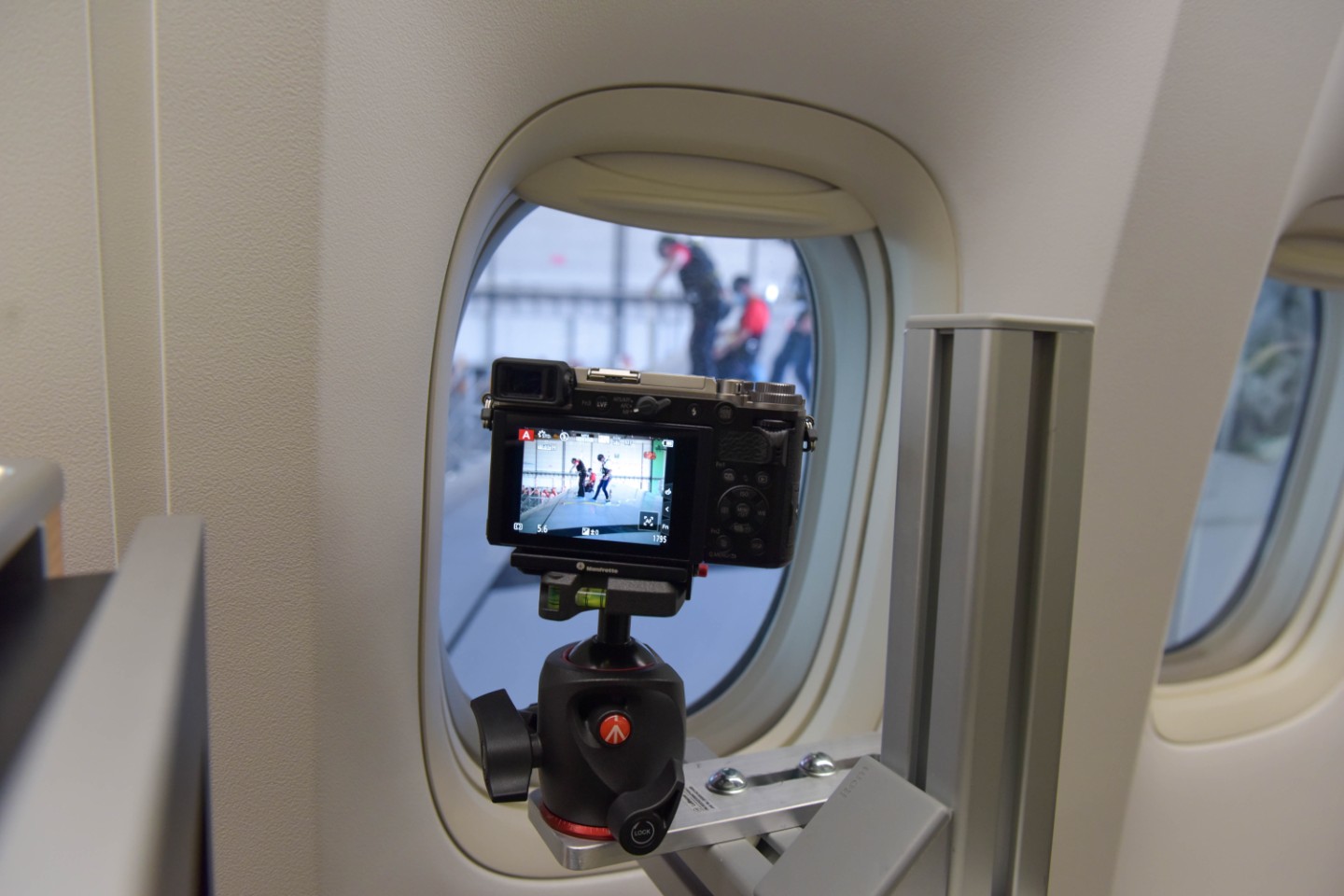
Innovative photogrammetry method for 3D models
The monocular method created at Fraunhofer IOSB resolves this issue: Additional ground measurements are used to fill in the missing distance data. The upper surface of the wing is covered in numerous measurement markers for this purpose, and a tachymeter is used to determine their positions. In various flight situations, a single camera that is permanently installed in the airplane cabin records and locates these marks multiple times per hour. The remainder is the math: Based on the idea that arc lengths don’t vary during bending, a model for wing deflection may also quantitatively account for length changes brought on by temperature changes. In the measurement photos, the locations of the measurement markings can be identified and translated into spatial coordinates. The effect of the window panes is taken into consideration during on-site camera calibration, and an optimization problem is then solved to determine the distance between the camera and the target marks.
With the assistance of a professional from the Karlsruhe Institute of Technology (KIT), we were able to successfully implement our patent-pending photogrammetry approach, claims Dr. Jochen Meidow, head of on-site surveying and a scientist at Fraunhofer IOSB. We were able to get the 3D model of a Boeing 777-300ER’s wing on a routine flight from Zurich to San Francisco and return and provide it to Lufthansa Technik.
Credits: Fraunhofer
Click on the following link, Metrologically Speaking to read more such news about the Metrology Industry.


